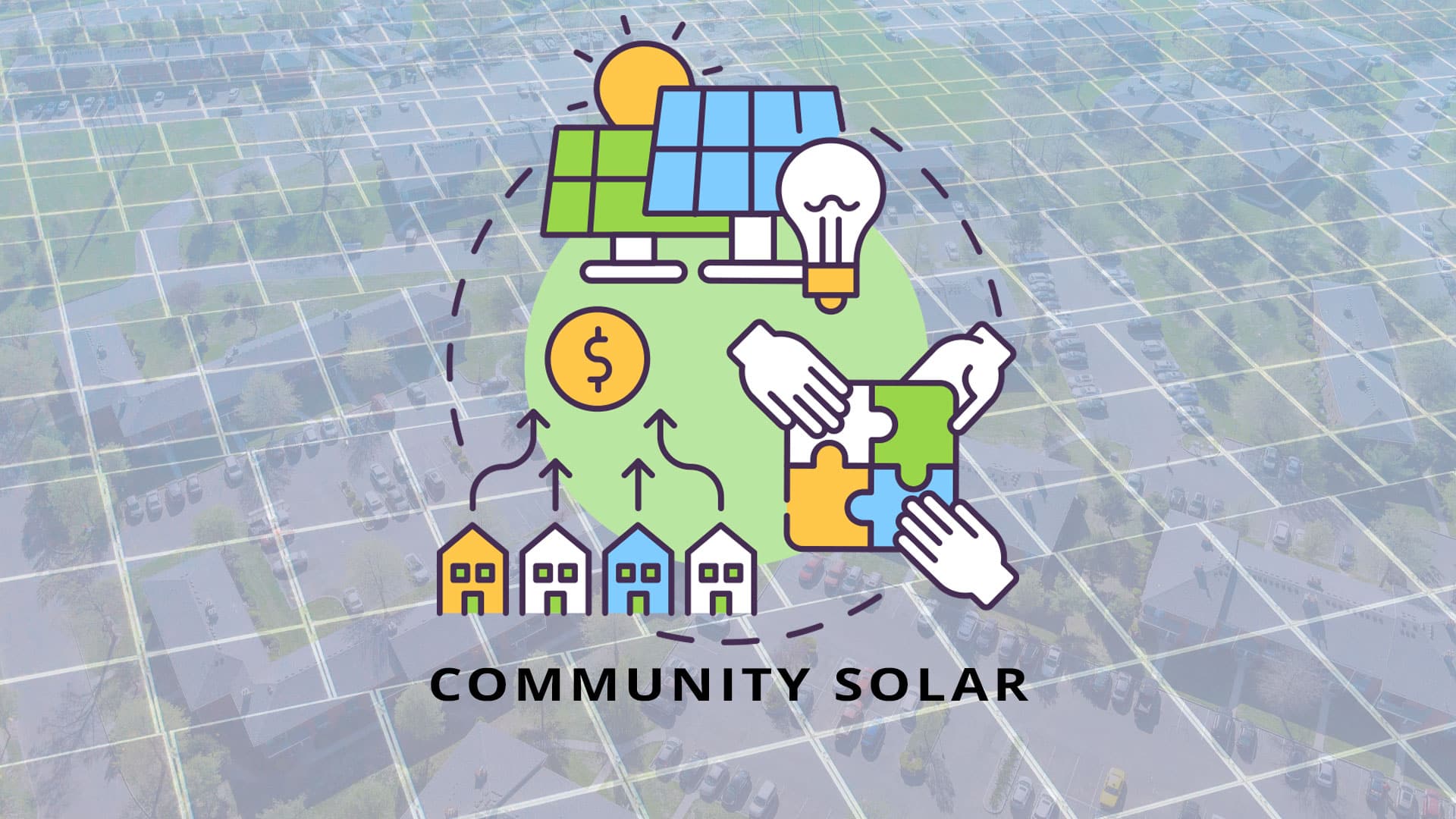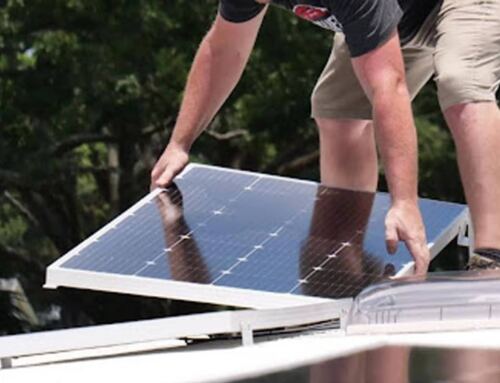Picture this: it’s 2023. You’ve just moved into a new apartment with only energy-efficient, electric appliances. You haven’t used a plastic straw since 2018 and you’re considering upgrading your old sedan to an electric vehicle. One thing you wish you had access to? Solar power for your home. But, you live in an apartment, and you will probably move again in the next 5 years. At this point, what can you do to receive the benefits of solar without the ability to own panels yourself?
In 2023 most Americans want improved access to clean energy–they know that our future depends on it. But switching to clean energy isn’t always simple, and many people currently encounter barriers to its adoption. These barriers include things like too much tree coverage on their roof, being a renter, living in an apartment, moving often, or simply not being able to afford the upfront costs of installing solar panels. In these cases, community solar may be an option.
How Does it Work?
Under a community solar program, local residents all share the output of a single large solar installation, called a solar farm. You can subscribe to a local solar farm and begin earning solar energy credits from your utility that reduce your electricity costs. Community solar takes advantage of state renewable energy incentives, such as those available under the 2022 Inflation Reduction Act, to help homeowners, renters, and businesses save money while also supporting solar power in their communities.
In particular, community solar expands access to solar for all, including low-to-moderate income customers most impacted by a lack of access, all while building a stronger, distributed, and more resilient electric grid. To meet ambitious climate goals and pave the way for all community members to leverage the cost-saving and health benefits of solar energy, the White House announced this year $10 million in awards to boost community solar. Additional money will fund projects that send back the most significant benefits to participating communities.
Benefits of Community Solar
There are many meaningful benefits to community solar. These include lower energy bills, increased energy resilience, equitable access to clean energy benefits, local economic benefits in the form of job creation, environmental and health benefits, and more. It forms a key part of the nationwide push towards a cleaner, more sustainable future.
Saving money is likely the most obvious and attractive benefit for people considering subscribing to a community solar project. Annual savings on your electricity bills could be between 5%-15% depending on the project, where you live, and your average energy usage. Saving 10% of an electricity bill can be anywhere from $97.04 a year in Utah to $187.45 in Connecticut, thus yielding significant savings over time.
Community Solar in the US
Since community solar is still relatively new, legislation differs between states. Currently, 20 states have passed legislation supporting community-shared solar gardens, but few have active programs with a significant number of interconnected gardens. In addition, although rural electric cooperatives have built a significant amount of community solar, many of the programs do not allow non-utility ownership.
One significant community solar project currently underway is being spearheaded by Google, which will use the solar power generated to further its goal of achieving round-the-clock clean energy by 2030. For this project, Google is joining forces with one of North America’s largest clean energy companies to build a 500-megawatt solar portfolio in 80 community-sized chunks, with 10% of the resulting revenue flowing to at least 25,000 high-energy-burden households. Large-scale projects like this one will create equitable solar access for many Americans seeking to join the clean energy transition.
Community Solar in Texas
As for community solar opportunities closer to home, projects are being actively pursued in Texas by Municipally Owned Utilities, Electric Cooperatives, Investor Owned Utilities, and Retail Electric Providers, proving that Texas offers a conducive environment for community solar. Texas is poised to expand community solar thanks to its permissive regulatory environment, availability of financing (in part due to the extension of the Federal Investment Tax Credit), and falling solar costs.
To find out if your area offers community solar opportunities, visit Go Solar Texas’ website, which provides helpful information for determining which utilities across the state offer community solar programs to its subscribers. Currently, CPS Energy based in San Antonio offers a Roofless Solar Program, and both Austin Energy and Pedernales Electric Cooperative are developing plans that will be available in their areas soon.
Go Solar
While it may not be the perfect time for you to install solar with NATiVE, we still encourage the adoption of solar by any means. Community solar is a great way for you to access solar energy and make a positive impact for both your wallet and the environment without the commitment of installing panels. Community solar can also act as a stepping stone to installing solar in the future and achieving complete energy independence. Remember to keep NATiVE in mind when that time comes. #TakeYourPowerBack

































Leave A Comment